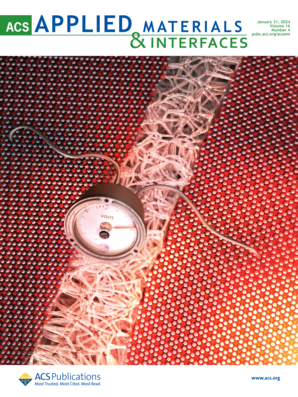Accelerating the Catalytic Conversion of Polysulfides in Lithium–Sulfur Batteries from Both the Cathode and the Separator Perspectives
IF 8.3
2区 材料科学
Q1 MATERIALS SCIENCE, MULTIDISCIPLINARY
引用次数: 0
Abstract
Lithium–sulfur (Li–S) batteries have a high theoretical energy density and are regarded to be an ideal choice for the next generation of electrochemical energy storage systems. However, their practical application is hindered by several bottlenecks, including the insulating nature of sulfur and its discharge products (Li2S2/Li2S), the shuttling behavior of intermediate polysulfides, and slow redox reactions. Herein, we propose a highly efficient bimetallic selenide electrocatalyst featuring a hollow porous core–shell spherical structure, which serves as both a cathode host and a modified separator coated on a commercially available polypropylene separator to address the above issues. The bimetallic selenide enhances cathode conductivity, and its unique hollow porous core–shell spherical structure provides rapid ion transport channels, along with ample spatial confinement for lithium polysulfides. Additionally, the abundant reactive sites on the bimetallic selenides exhibit high intrinsic electrocatalytic activity, accelerating polysulfide conversion and improving redox kinetics. Density functional theory calculations indicate that bimetallic selenides interact more strongly with polysulfides and present lower reaction barriers compared to those of their sulfide counterparts. Consequently, these bimetallic selenide materials demonstrate superior rate performance and cycling stability in Li–S batteries, achieving an impressive lifespan of 1400 cycles with a minimal decay rate of 0.030% per cycle at 1.0 C. This work provides unique insights into enhancing the performance of transition metal compounds in Li–S batteries.

从阴极和分离器的角度加速锂硫电池中多硫化物的催化转化
锂硫电池具有较高的理论能量密度,被认为是下一代电化学储能系统的理想选择。然而,它们的实际应用受到几个瓶颈的阻碍,包括硫及其放电产物(Li2S2/Li2S)的绝缘性质,中间多硫化物的穿梭行为以及缓慢的氧化还原反应。在此,我们提出了一种高效的双金属硒化电催化剂,其具有中空多孔核壳球形结构,既可以作为阴极宿主,也可以作为涂覆在市购聚丙烯分离器上的改性分离器来解决上述问题。双金属硒化物提高了阴极导电性,其独特的空心多孔核壳球形结构为锂多硫化物提供了快速的离子传输通道,以及充足的空间约束。此外,双金属硒化物上丰富的活性位点表现出较高的本征电催化活性,加速了多硫化物的转化,改善了氧化还原动力学。密度泛函理论计算表明,与硫化物相比,双金属硒化物与多硫化物的相互作用更强,反应障碍更低。因此,这些双金属硒化材料在Li-S电池中表现出卓越的倍率性能和循环稳定性,在1.0℃下实现了令人印象深刻的1400次循环的寿命,每循环的最小衰减率为0.030%。这项工作为提高Li-S电池中过渡金属化合物的性能提供了独特的见解。
本文章由计算机程序翻译,如有差异,请以英文原文为准。
求助全文
约1分钟内获得全文
求助全文
来源期刊

ACS Applied Materials & Interfaces
工程技术-材料科学:综合
CiteScore
16.00
自引率
6.30%
发文量
4978
审稿时长
1.8 months
期刊介绍:
ACS Applied Materials & Interfaces is a leading interdisciplinary journal that brings together chemists, engineers, physicists, and biologists to explore the development and utilization of newly-discovered materials and interfacial processes for specific applications. Our journal has experienced remarkable growth since its establishment in 2009, both in terms of the number of articles published and the impact of the research showcased. We are proud to foster a truly global community, with the majority of published articles originating from outside the United States, reflecting the rapid growth of applied research worldwide.
 求助内容:
求助内容: 应助结果提醒方式:
应助结果提醒方式:


